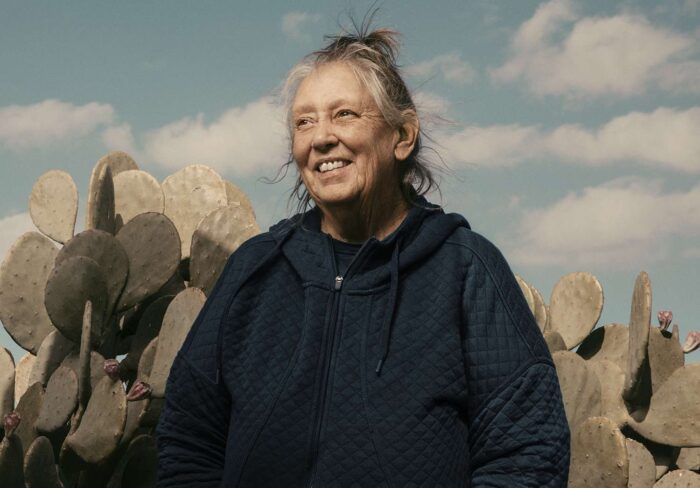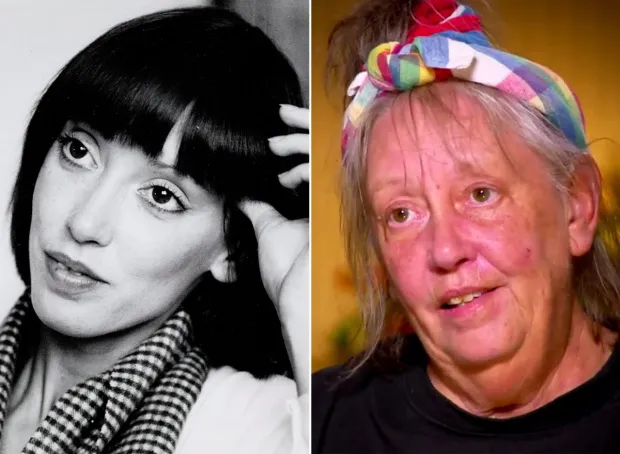Shelley Duvall’s Intense Journey in “The Shining”: A Haunting Tale
Stanley Kubrick’s “The Shining” (1980) is widely regarded as one of the greatest horror films ever made. Based on Stephen King’s novel of the same name, it tells the story of Jack Torrance (Jack Nicholson), his wife Wendy (Shelley Duvall), and their son Danny, who become winter caretakers at the isolated Overlook Hotel in Colorado. As supernatural forces begin to influence Jack’s sanity, Wendy and Danny find themselves in increasing danger.
Push Into Madness
Kubrick’s Meticulous Style: Stanley Kubrick was notorious for his perfectionism and demanding directorial style. He often required numerous takes of scenes, sometimes reaching into the hundreds. This approach was particularly challenging for Duvall, who had to maintain a high level of emotional intensity throughout the lengthy production.
Sustained Distress: The six-month shoot from May to October 1979 was grueling for the entire cast and crew, but particularly for Duvall. She was required to stay in character as the increasingly terrified and desperate Wendy Torrance for extended periods. This prolonged state of fear and anxiety began to blur the lines between acting and reality for Duvall.
The Most Difficult Role: In later interviews, Duvall described her experience on “The Shining” as the most challenging of her career. The combination of Kubrick’s demanding style, the intense subject matter, and the physical and emotional toll of the role created a perfect storm of difficulty for the actress.
The Baseball Bat Scene

Iconic Confrontation: The scene where Wendy confronts Jack on the staircase, wielding a baseball bat in self-defense, is one of the most memorable in the film. It encapsulates the growing tension and terror in the Torrance family as Jack descends into madness.
Haunting Lines: Jack Nicholson’s delivery of the line “I’m not gonna hurt you. I’m just going to bash your brains in” is chilling and showcases the character’s complete mental breakdown. The contrast between his words and actions heightens the horror of the scene.
Duvall’s Emotional Impact: Years later, during a career retrospective, Duvall became visibly upset when watching this scene. The emotional trauma of filming seemed to have left a lasting impact on her, demonstrating the intense realism she brought to the role.
Physical and Mental Toll
Isolation on Set: Kubrick reportedly isolated Duvall from the rest of the cast and crew to heighten her sense of anxiety and loneliness. This method of acting approach, while effective for the film, took a significant toll on Duvall’s mental well-being.
Hair Loss and Anxiety Attacks: The stress of the role manifested physically for Duvall. She experienced hair loss and suffered from anxiety attacks during filming. These symptoms underscore the extreme pressure she was under throughout the production.
Unforgettable Portrayal: Despite the hardships, or perhaps because of them, Duvall’s performance as Wendy Torrance is considered one of the most realistic portrayals of fear and desperation in cinema history. Her wide-eyed terror and frantic energy contribute significantly to the film’s oppressive atmosphere.
Kubrick’s Controversial Directing Methods
- Emotional Manipulation: Kubrick was known to use psychological tactics to elicit genuine emotions from his actors. With Duvall, he would often criticize her performance in front of the crew, deliberately isolating her to amplify her character’s sense of helplessness.
- Exhausting Repetition: The famous “baseball bat scene” reportedly took 127 takes to complete. This level of repetition was not uncommon in Kubrick’s productions, but it was particularly taxing for Duvall, given the emotional intensity of her scenes.
Long-Term Impact on Duvall’s Career
- Career Trajectory: While “The Shining” is considered a classic, the grueling experience affected Duvall’s enthusiasm for acting. Her film appearances became less frequent in the years following the movie’s release.
- Public Perception: In later years, Duvall’s mental health became a subject of public discussion, with some speculating about the long-term effects of her experience on “The Shining” set.
The Film’s Initial Reception and Legacy
- Mixed Initial Reviews: Interestingly, “The Shining” received mixed reviews upon its initial release. Some critics praised its technical brilliance but felt it lacked emotional depth.
- Cult Following: Over time, the film developed a strong cult following and is now considered a masterpiece of the horror genre.
- Influence on Pop Culture: The movie has inspired countless homages, parodies, and analyses in film studies and pop culture.
Stephen King’s Reaction
- Author’s Disapproval: Stephen King, who wrote the novel on which the film is based, famously disliked Kubrick’s adaptation. He felt it needed to capture the essence of his story, particularly in its portrayal of the Wendy character.
- Duvall’s Portrayal: King described Duvall’s Wendy as “one of the most misogynistic characters ever put on film,” viewing her as weak and one-dimensional compared to the more robust character in his novel.
Behind-the-Scenes Footage

- Documentary Evidence: Kubrick’s daughter, Vivian, shot behind-the-scenes footage that was later compiled into a documentary. This footage provides rare glimpses into the intense filming process and Duvall’s state during production.
- Visible Stress: In some of this footage, Duvall can be seen looking exhausted and stressed, further illustrating the toll the production took on her.
Conclusion
Shelley Duvall’s experience filming “The Shining” represents an extreme example of the potential costs of method acting and demanding directorial styles. While her performance is lauded as a cornerstone of the film’s success, it came at a significant personal cost to the actress. The film’s enduring impact is a testament to the dedication of its cast and crew but it also raises questions about the ethics of pushing performers to such extremes for the sake of art.
FAQs about Shelley Duvall’s experience filming “The Shining” and the movie itself
Q: How long did it take to film “The Shining”?
A: The principal photography lasted about 6 months, from May to October 1979.
Q: Did Shelley Duvall and Jack Nicholson get along on set?
A: While they were professional, their on-set relationship was strained due to Kubrick’s directing methods and the intense nature of their scenes.
Q: How many takes did the baseball bat scene require?
A: According to reports, the infamous baseball bat scene took 127 takes to complete.
Q: Did Shelley Duvall’s hair really fall out during filming?
A: Yes, Duvall reported experiencing hair loss due to the stress of filming.
Q: Was Shelley Duvall aware of Kubrick’s directing methods before accepting the role?
A: While Duvall knew of Kubrick’s reputation, the full extent of his methods became apparent during filming.
Q: Did Stanley Kubrick regret his treatment of Shelley Duvall?
A: There’s no clear evidence that Kubrick ever expressed regret, though he praised Duvall’s performance in later interviews.
Q: How did “The Shining” affect Shelley Duvall’s career?
A: While the film is now considered a classic, the grueling experience led to Duvall taking fewer film roles in subsequent years.
Q: Was the movie filmed at an actual hotel?
A: While exterior shots were filmed at the Timberline Lodge in Oregon, most interior scenes were shot on sets at Elstree Studios in England.
Q: Did Stephen King like the film adaptation?
A: No, King was famously dissatisfied with Kubrick’s adaptation, feeling it strayed too far from his original story.
Q: Has Shelley Duvall spoken about her experience in recent years?
A: Duvall has given occasional interviews where she’s discussed the challenges of filming “The Shining,” but she’s generally maintained a private life.
